Vitalik reiterates distributed validation technology, why you should pay attention to Lido again?
Written by: Deep Tide TechFlow
With the rotation of narratives, the market's focus is gradually shifting back to Ethereum.
Vitalik's various research on Ethereum often contains the potential to lead new hotspots. On December 28, Vitalik published a research blog post exploring how to handle the enormous number of signature loads in the Ethereum network without sacrificing decentralization.
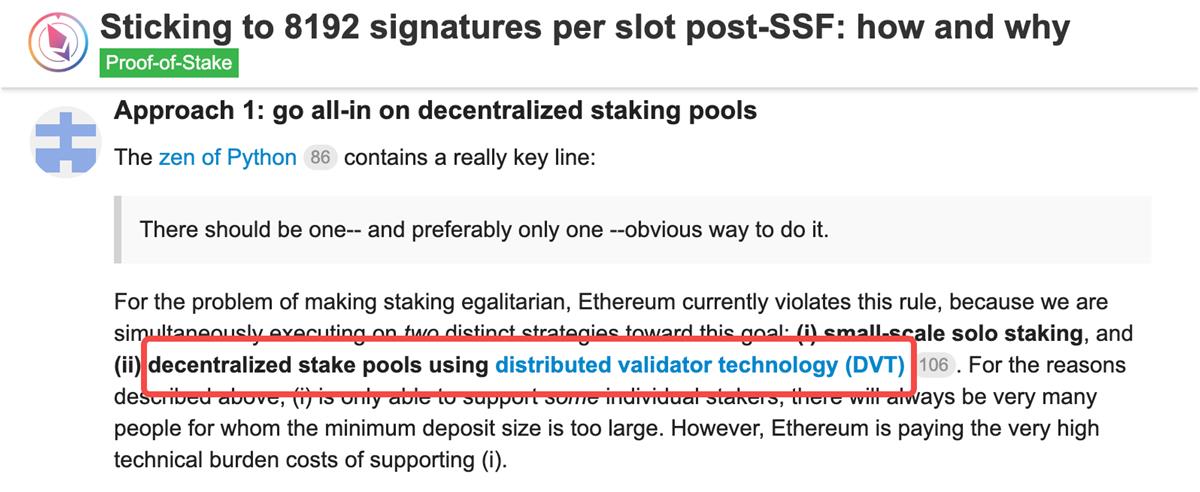
At the same time, Vitalik also proposed a solution in his research: using DVT (Distributed Validator Technology) to build decentralized staking pools.
As is well known, after the merge, Ethereum's consensus mechanism transitioned to a POS with staking. Currently, several major staking service providers dominate a large market share, raising concerns about the centralization of staking services.
High performance load, centralized staking, and Vitalik wanting to solve problems… everything has returned to the old narrative of "optimizing Ethereum."
When it comes to DVT, the project that first comes to mind in the market is SSV — the only project currently using distributed validation technology in the liquid staking field, with a market capitalization of only around $200 million.
However, due to the relatively mature ecosystem on Ethereum, once a technical narrative is reignited, avoiding crowded investment directions and pursuing relatively stable Beta returns is also a good choice.
Therefore, besides SSV, which is the most direct project that comes to mind, Lido itself is also worth paying attention to.
Breaking the Stereotype of LDO Centralized Staking
A classic logical fallacy: in the liquid staking track, whoever has a high market share is centralized.
From the data, Lido occupies 30% of the market share, indeed holding a dominant position. However, the monopoly of market share and whether the staking method is centralized are actually two different matters.
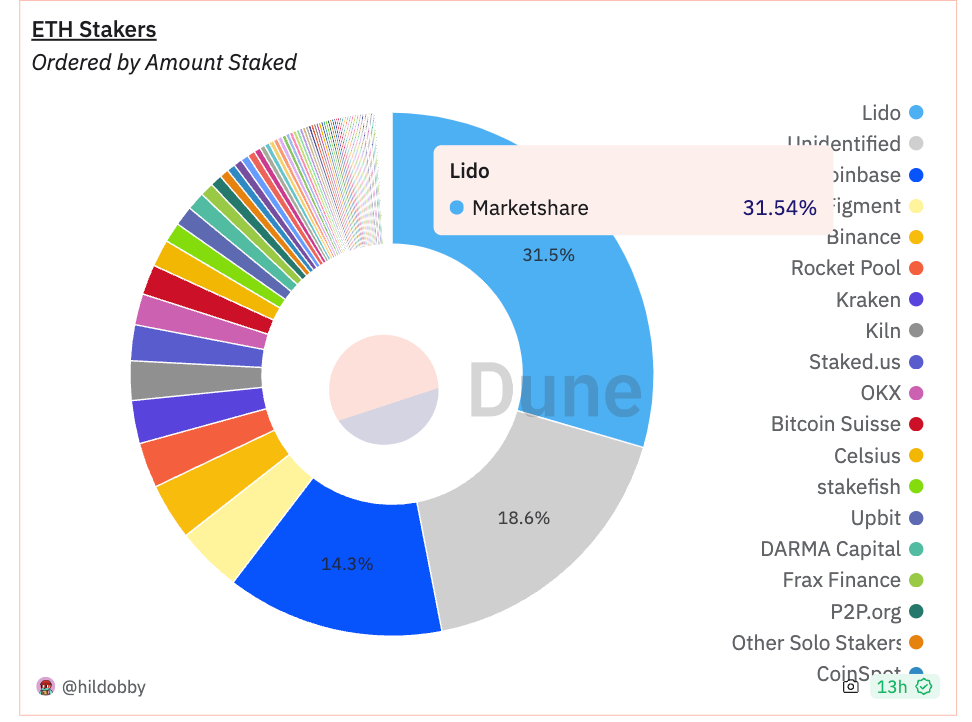
A high market share only indicates that you are the leader, possibly monopolizing the market; but how the leader stakes using what technology still needs to be examined closely.
In November last year, Lido had already implemented the DVT solution emphasized by Vitalik to achieve so-called distributed validators. Lido refers to this solution as the "Simple DVT Module," supported by ObolNetwork and ssv_network.
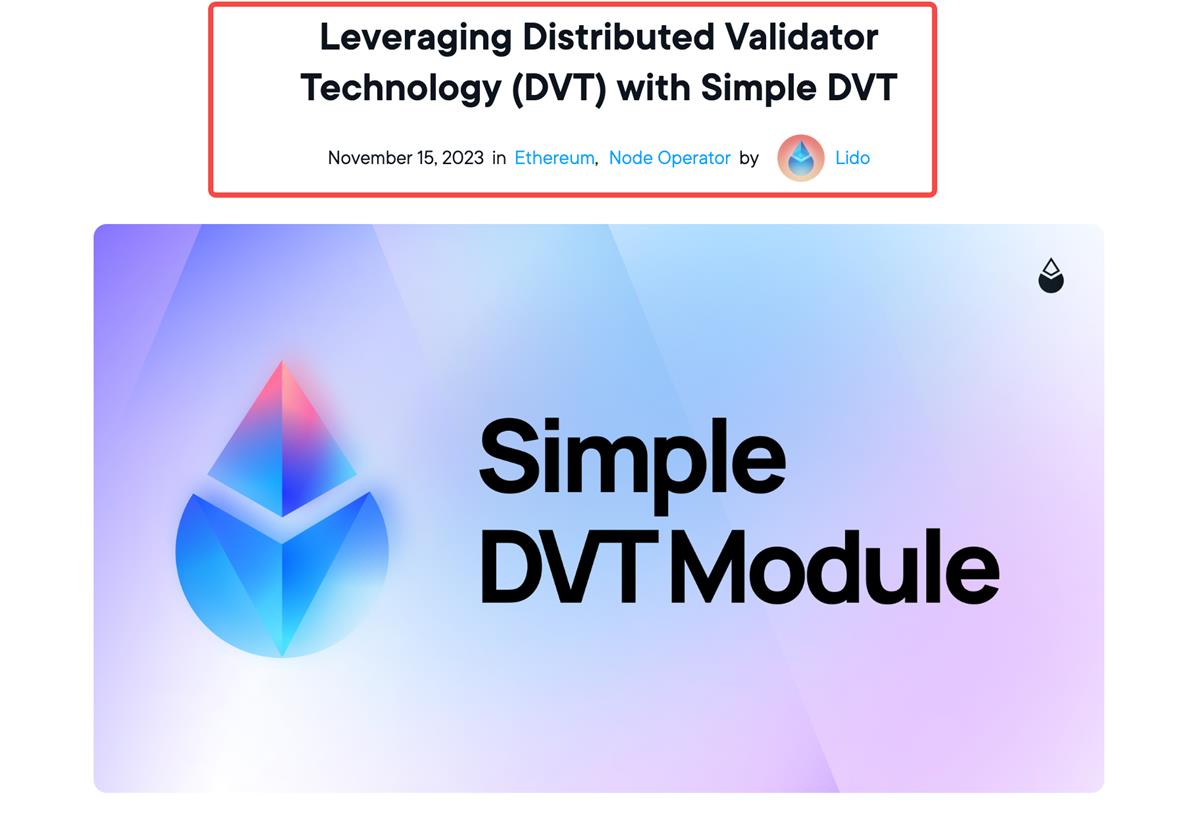
Putting aside the technical details of this solution, in simple terms, Lido now allows multiple node operators to manage different nodes, reaching consensus together to fulfill the responsibilities of Validators. This also provides broader participation opportunities for node operators, enhancing the network's decentralization, distribution, and resilience.
Currently, the Simple DVT module allows individual stakers, community stakers, existing node operators, and other staking organizations to participate in Lido's testnet, which will subsequently update the mainnet to include a more diverse staking network of validators.
From the testnet data, there are over 300 participants globally, with more than 175 individual and community stakers participating in the testnet, and the distribution of nodes is increasingly decentralized.
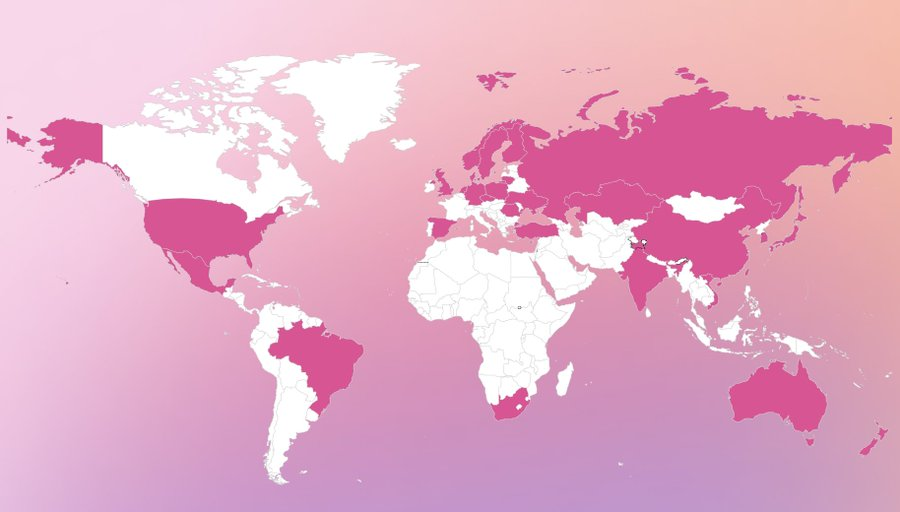
Therefore, Lido's technological changes actually reveal a layer of information: the project has aligned with the DVT recently reiterated by Vitalik.
Whether market funds will take the opportunity to speculate still requires analysis of Lido's other fundamental data.
Insight into Data, Seeking Beta Returns
Beyond technology, how are Lido's other fundamentals?

We all know that Lido is the leader in liquid staking, occupying over 30% of the staking share. However, such absolute data does not reveal its potential or the space for capital speculation.
But if we make a comparison, you can easily spot the opportunities:
The ETH staked in Lido accounts for about 8% of the total ETH supply in the current market; in contrast, the market capitalization of LDO tokens is less than 1% of the total market capitalization of ETH tokens — the market cap relative to the contribution of liquid staking may be underestimated;
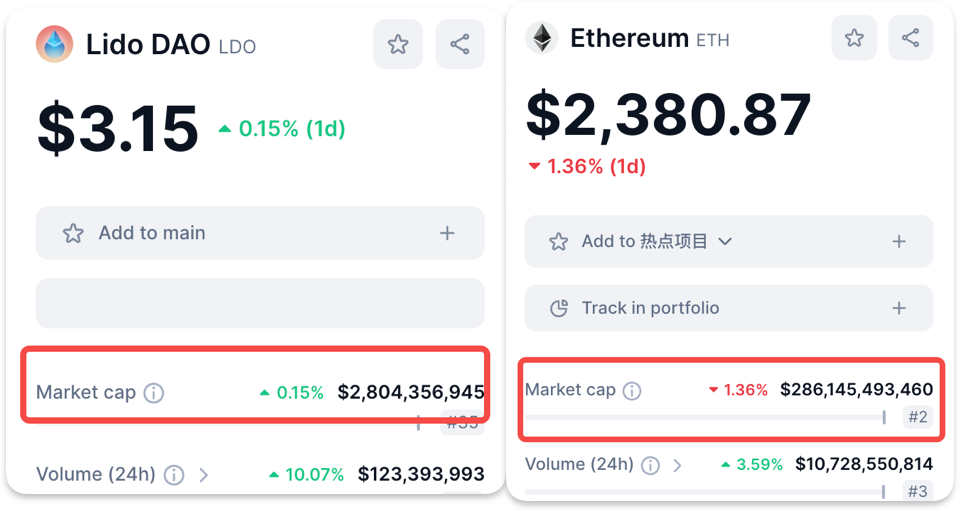
A more intuitive comparison is that after the Ethereum merge upgrade allowed users to withdraw their staked ETH, theoretically, the amount of ETH in various liquid staking pools would decrease;
However, data from DefiLlama shows that Lido's TVL has increased in 2023, meaning that the ETH staked through Lido has actually increased.

At the same time, technical analysis from external analysts and KOLs shows that LDO is breaking through a resistance level that has persisted for the past year and a half, while also breaking through a downward trend that has lasted nearly 20 months.
Although pure technical analysis cannot guide investment research, a good fundamental (returning to the DVT narrative) combined with changes in technical patterns actually provides market funds with a certain rationale and space for operation.
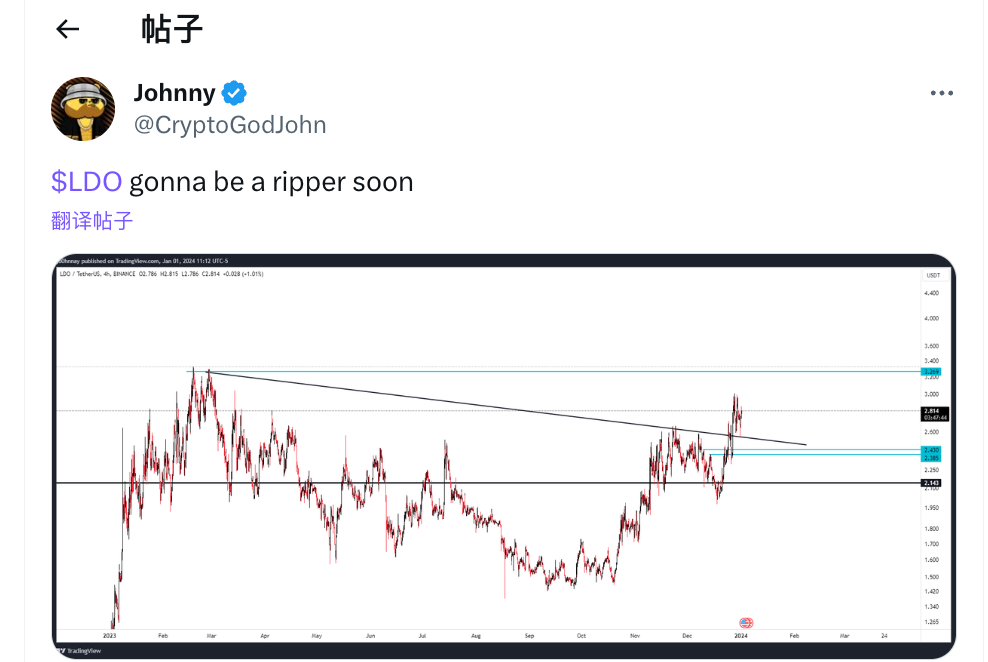
Indeed, betting on smaller market cap projects like SSV and ObolNetwork may yield higher returns, but it also means more volatility in token prices.
The re-emphasis on DVT technology, the market's focus on the narrative of optimizing Ethereum (such as parallel EVM), and the upcoming Cancun upgrade in the first quarter of this year actually provide a visible opportunity window for funds to return to the Ethereum ecosystem;
While paying attention to low market cap projects, choosing leading projects closely related to the ETH track may also be a relatively safe choice to capture Beta returns.
After all, in the crypto market, old projects often revive rapidly when they are overlooked, only to see countless justifications for this revival amid information overload.
Making relatively safe decisions before the revival is far better than chasing the tail end after the crowd has gathered.










